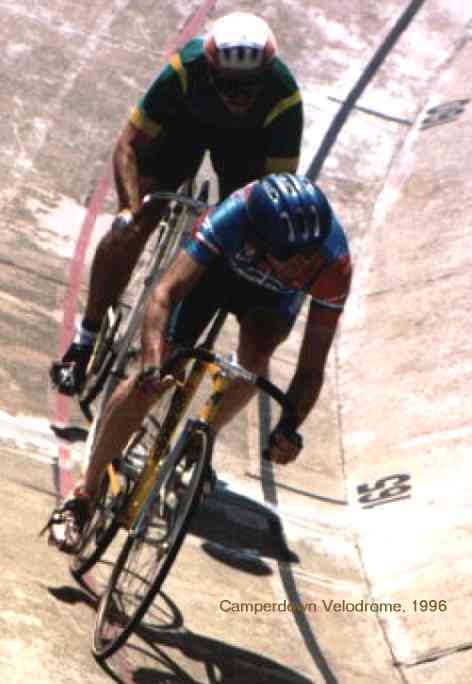What about faster trains on shorter routes?
Given that I think I convincingly debunked the economic and environmental wisdom of a fast train between Sydney and Melbourne (even if I do say so myself), what about the proposals for fast trains from Penrith and Gosford to Sydney?
Well these proposals are not necessarily for fast trains, but certainly faster. A fast train is one that travels above 200kmh, at least in my book. To reach that speed requires enormous torque to get it rolling, low drag, high-end power and good, strong brakes to bring it back to a stop. You also need few if any curves, easy grades, strong and smoothly jointed track and big enough centres of population to justify the investment. In Japan in the 1960s and 70s, for several reasons, no problem. However in the cases of Penrith and (especially) Gosford, big problems. Penrith to Sydney CBD may generate enough passengers if the train stops at Parramatta, and especially Strathfield, but each stop kills the average speed. With Gosford the problem of attracting passengers at premium rates is compounded by the need for truly massive tunneling. On the plus side you could stop at Hornsby or perhaps Chatswood, but again the average speed falls dramatically.
If we want a fast train to go anywhere it must have its own track. It can't share, because sharing will slow it down, even if it gets priority. It also increases complexity and imposes risks. Existing train services will be slowed, and the track will of necessity be improved to cope with the fast train's needs. In any event the grades and curves will need to meet fast train specifications, which existing rail cannot do. So it's tunnel, tunnel, tunnel, new stations, new track and new trains, along with the anciliaries like maintenance areas.
You could perhaps design a big arc from Gosford to Penrith that takes in Chatswood, the CBD, Hurstville, Liverpool and Parramatta, which may offer some benefit - but the cost would be extortionate. With a finger in the air you'd say that's 200km of track. At least half of that would cost $2billion per 10km, say $20 billion and half that price for the "easy" bits. So $30 billion. If you add Newcastle as well you could pay around $40billion for the track but at least please some more commuters. Wyong would want in and you'd have an argument about time lost in stopping but you'd flip a coin and see what happens. And remember, for that bargain price you still don't have any trains, just the bare infrastructure.
You would have trains accelerating and then decelerating quite quickly, but the savings in time would still be substantial, even if your maintenance costs will be high. And on some sections you may have a ready market, but how ready will they be to pay premium fares? With a $40billion price tag you'd hope to get most of the existing commuter market, but even so you aren't going to approach Japanese levels of passenger volume, especially if you price to recover cost.
And many commuters change trains (and buses), so you need convenient interconnects. Get that and the pricing wrong and commuters may as well keep driving rather than drive to the fast train station. Or just stay on the now-slightly-less-full existing 80-100kmh trains and save some money.
So why even contemplate fast trains? Because there's a theory - and a pretty good one too - that if we can move around faster we can (a) do more work of economic value in any given time period and (b) increase our range of economic choice in terms of location, so we can work and purchase goods and services further outside of our regular "economic zone". In simple terms we increase our range and thus increase the overall level of competition. In that way companies can source good workers from further afield, potentially lowering costs of production; and purchasers can consider a wider range of sources for many commodities and services, driving down prices. Easily said - now go and measure it.
You could also say that commuting time saved can be "spent" elsewhere, perhaps in relaxation, and that too will be an economic (and social) benefit. However we choose to look at it, we still have to determine a value for the economic and social value generated and compare it with the total economic, environmental and social cost. And then consider the opportunity cost - what could we have done with that money had we spent it elsewhere?
In terms of carbon emissions, a fast train of any sort will release carbon in the construction phase - dramatically so - and will in day-to-day operation fair badly in comparison with slower, conventional trains. You can't accelerate a train to speed without consuming energy - and it's going to be coming from coal-fired power-stations for the immediate future. However these faster trains will still be more efficient than thousands of individuals in their wretchedly grid-locked cars - and it would be hoped that some such cars would be taken off the roads as a consequence, or the growth in car use avoided. If that's not achieved then we've done nothing for global warming, except taken a step back.
In this way the $40billion spent is just one part of the equation. In the end we may buy a less-fast train that stops at more stations but still needs its own reserved track. But let's not imagine that the sums are small or the calculations easy.
Labels: fast trains, Gosford, Penrith, Sydney








